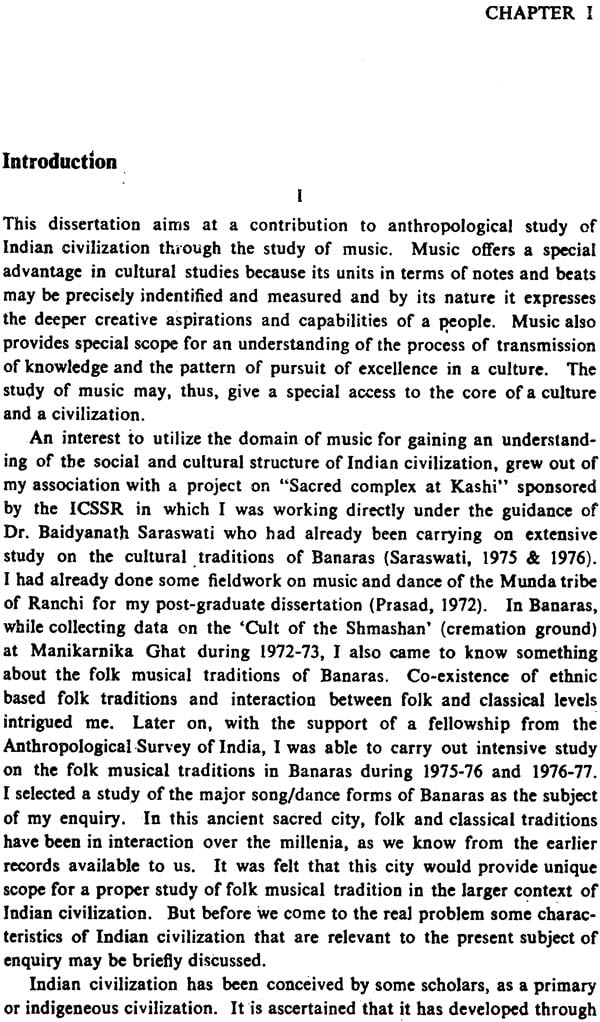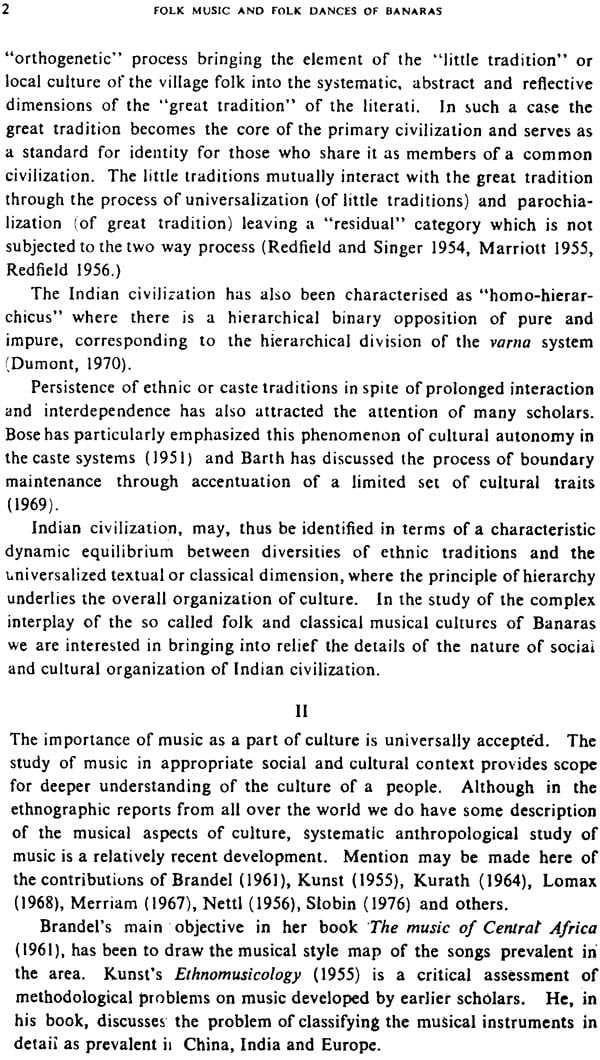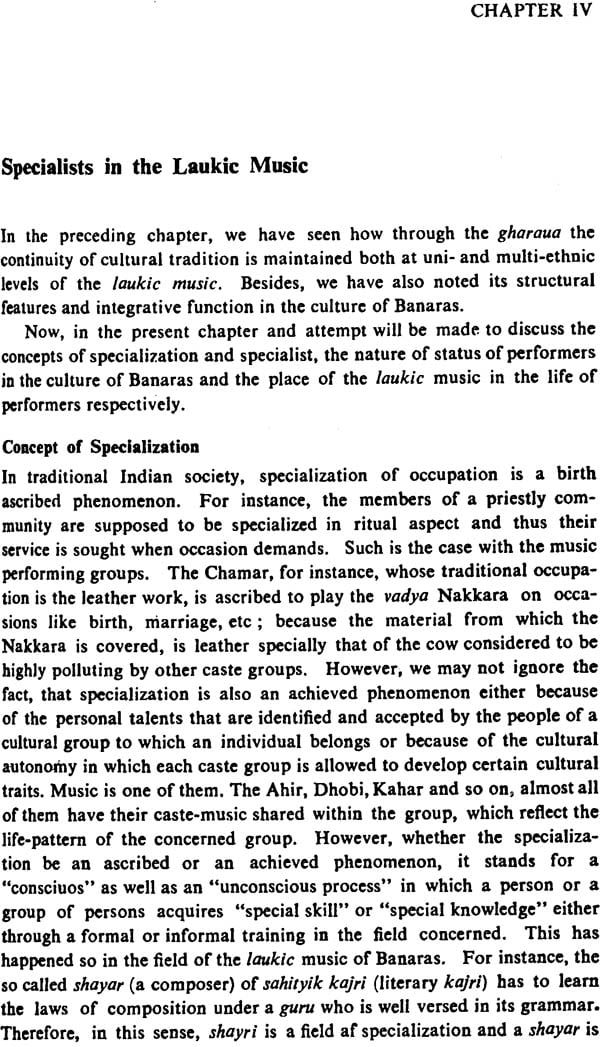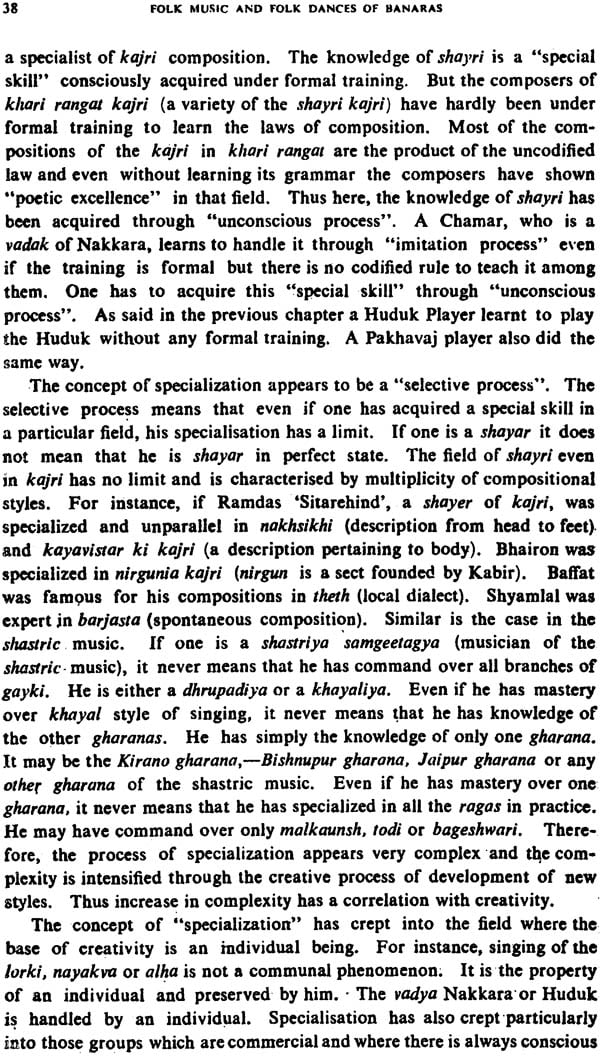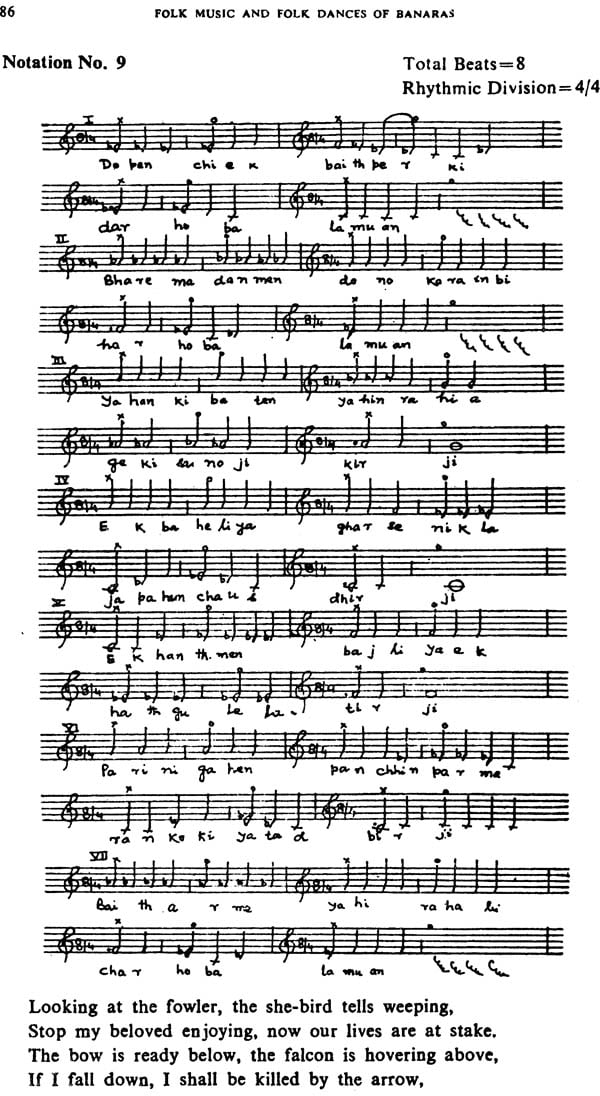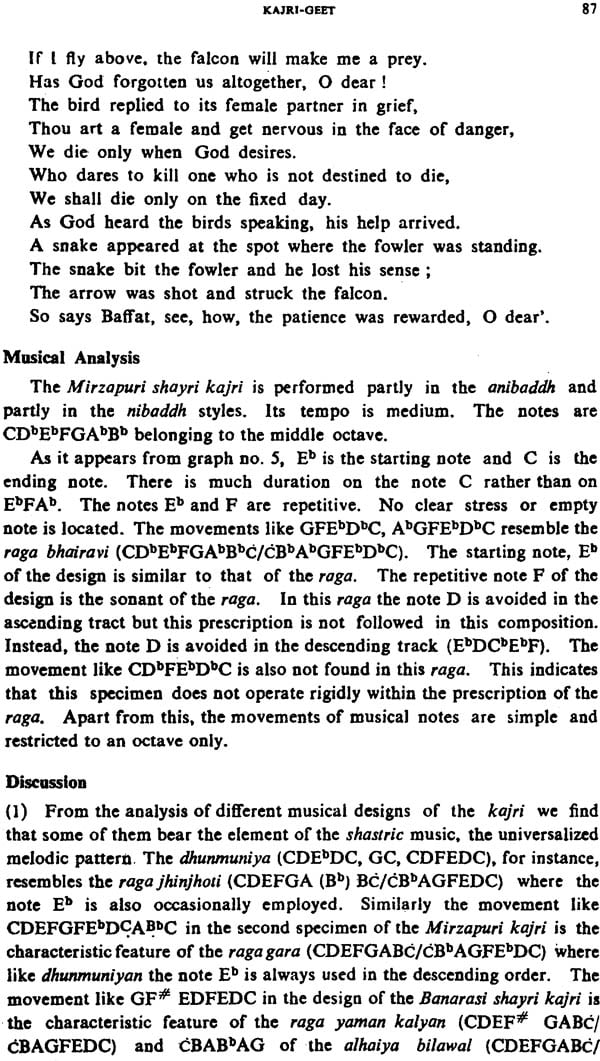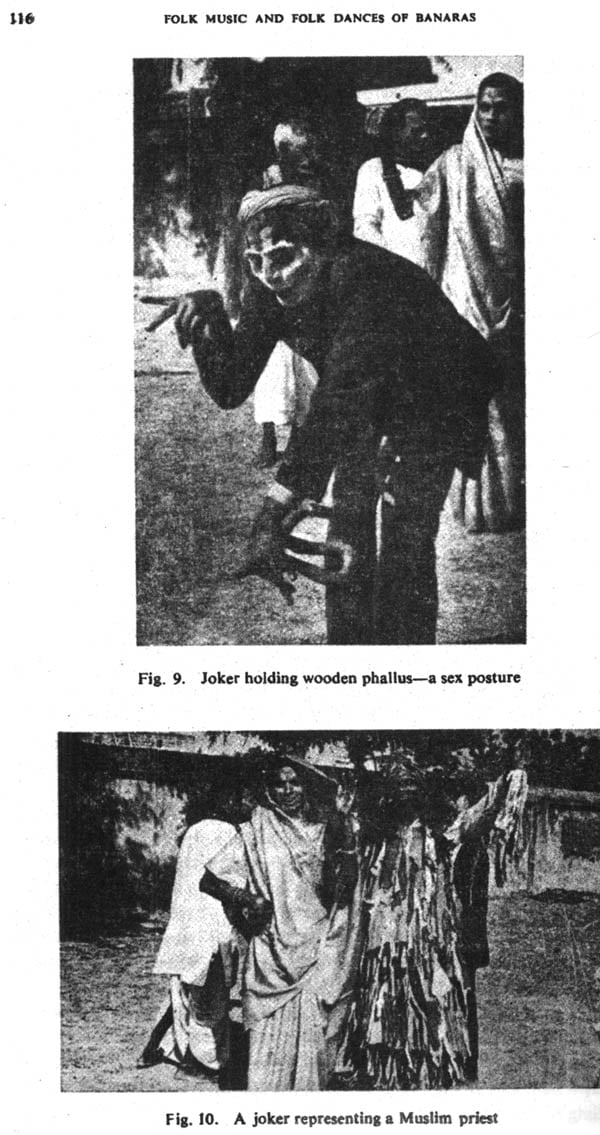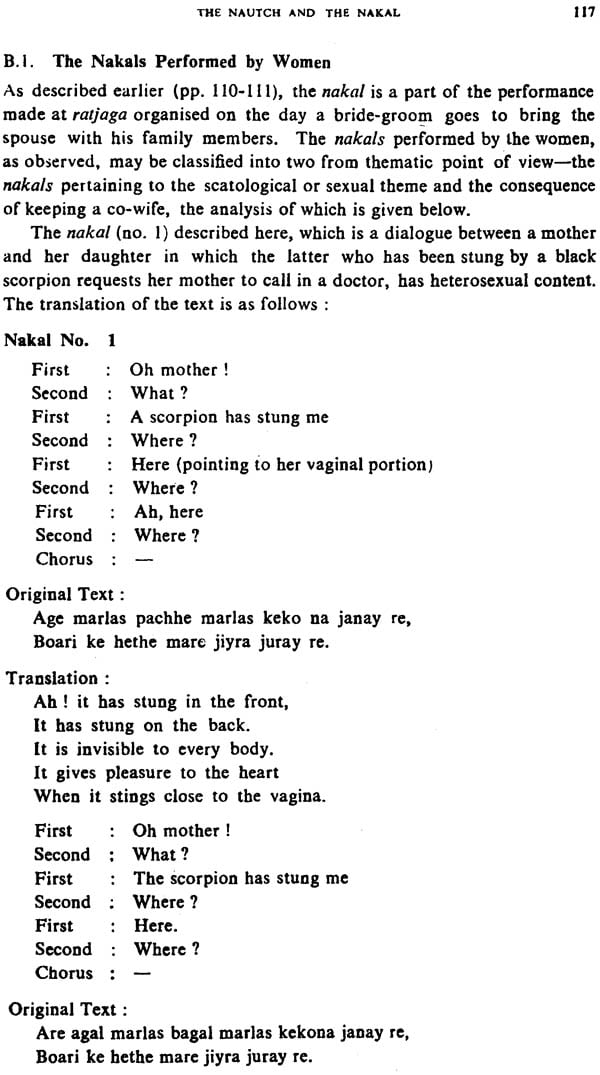
Folk Music and Folk Dances of Banaras
Book Specification
| Item Code: | NAB736 |
| Author: | Onkar Prasad |
| Publisher: | Anthropological Survey of India, Kolkata |
| Language: | English |
| Edition: | 2010 |
| Pages: | 175 (Ten B/W Illustrations) |
| Cover: | Hardcover |
| Other Details | 9.6 inch X 6.5 inch |
| Weight | 560 gm |
Book Description
Dr. Onkar Prasad did M.Sc. (Anthropology) from Ranchi University in 1972 and Ph.D. (Anthropology) from Calcutta University in 979. He has many articles and book entitled Santal Music: A Study in Pattern and Process of Cultural Persistence to his credit. Dr. Prasad who is presently working as a lecturer in the Department of Palli Charcha Kendra (Centre for Rural Studies), Visva-Bharati University, Sriniketan – 731236, has a deep interest in the field of Anthropology of Music of both the tribal and the non-tribal communities.
With an unusually rich living heritage of Desi (tribal and folk) and Marga (classical) traditions, the Indian sub continent provides an almost unlimited Held for ethno-musicological studies. Unfortunately, ethno-musicology is rot yet systematically taught in any University Department in India. This field remains yet to be explored by scholars who have rigorous formal training in cultural anthropology and have also gained training in music on their own initiative. Shri Onkar Prasad belongs to that very rare species of interdisciplinary combination in our country.
When he joined the Anthropological Survey of India in l975 as a Research Fellow, Onkar Prasad had already done some field work on music and dance of the Munda tribe of Ranchi for his MHA, dissertation at Ranchi University. He also had extensive exposure to the cultural configuration of Banaras as a participant in an ICSSR project on "Sacred Complex at Kasi" under the guidance of Dr. Baidyanath Saraswati. While working at Banaras, Shri Prasad became interested in the pattern of interaction between ethnic based folk traditions and classical musical traditions of Banaras. When he joined the Anthropological Survey of India as a Research Fellow, Shri Prasad carried out an intensive study on the folk musical traditions in the city of Banaras.
Musical notes provide precisely definable elements for the study of culture and Shri Onkar Prasad made a very effective and imaginative entry into the arena of Indian civilisation through the study of musical cultures in the total ethnographic context. Before taking up the project. Shri Prasad fully equipped himself with carefully reading the available anthropological literature in ethno-musicology. His enquiry covers the entire range of Laukic (folk), Shastric (classical), Upashastric (semi-classical) and modern film musical songs co-existing in the city of Banaras.
Readers of this monograph will be impressed by the clarity of conceptualisation of the research problem. The methods of field enquiry have also been precisely stated in the introductory chapter. The institutional context of the Laukic musical forms and the roles of specialists have been brought clearly into relief The melodic structures of the various forms of Kajri and Birha folk traditions have been rigorously analysed in chapters six and seven where one observes a. trend of universalisation from simpler folk forms and also the impact of classical songs on the folk forms.
A comparative study of the Nautch forms and Nakals displayed, by males and females provide us with an understanding of the problem of the ‘private’ versus the ‘pub1ic’ arenas and of role-reversal between the sexes.
Unlike tribal music where there is hardly any role for specialist or consideration of "excellence" in performance, the Laukic tradition of music in Banaras is carried from generation to generation through the formal institutional organisation of Gharana through guru-shishya parampara while maintaining the ethnic base. The data also indicate that the hierarchical norms in Varna-jati social order is also reflected in the exposition of musical forms.
Dr. Onkar Prasad finally observes that as one probes deeply into the latent level of musical culture of the Laukic forms, a commonly shared musical tradition of Banaras emerges as a unified field cutting across the dichotomies of the Laukic and the Shastric levels.
It was indeed a great pleasure and privilege to be associated with Shri Onkar Prasad as he gradually probed into the domain of Laukic music in the complex arena of Banaras with imaginatively improvised tools of field enquiry and analysis of data. As a student of social and cultural organisation of Indian civilisation, I consider this monograph to be a very significant contribution in the held. I hope it will stimulate other scholars to take up ethno-musicological studies among other groups and regions in India with the same rigour of theoretical and methodological preparation that Dr. Onkar Prasad has exhibited in his pioneering doctoral dissertation.
| Foreword | v | |
| Acknowledgement | vii | |
| List of Illustrations | xi | |
| Chapter I | Introduction | 1-8 |
| Chapter II | Contemporary Indian Music: A classification with special reference to the field of Banaras | 9-24 |
| Earlier Classifications-9; Laukic Music-14; Para Music-15; Apara or Shastric Music-15; Upshastric Music-15; Film Music-16; Classifications of Laukic Music-16; Classification of Shastric Music -20; Summary-23. | ||
| Chapter III | Institutional Context of the Laukic Music | 25-36 |
| Gharana-25; The structural feature of Gharanas in the Laukic Music-27; Gharanas and Inter-ethnic Interaction-29; Guru-shishya Parampara-31; Mode of Learning the Laukic Music-32; Guru-shishya Relationship and Gupta-Vidya-33; Summary-35. | ||
| Chapter IV | Specialists in the Laukic Music | 37-46 |
| Concept of Specialization-37; The specialist-39; Composer-performer Relastionship-42; Status of Performers in Society-42; Place of the Laukic Music in the Life of Performers-44; Summary-45. | ||
| Chapter V | Vadyas of Banaras | 47-65 |
| Huduk-47; Jori-51; Mridang-51; Dholak-60; Discussion-61; Summary-63. | ||
| Chapter VI | Kajri Geet | 66-93 |
| Dhummuniya-68; The Kajri-proper-71; The Shayri Kajri-78; Discussion-87; Summary-89. | ||
| Chapter VII | Birha Geet | 94-109 |
| The Ahirau Birha-95; The Dhobiau Birha-99; The Khatikau Birha-102; Discussion-105; Summary-107. | ||
| Chapter VIII | The Nautch and the Nakal | 110-129 |
| The Nautch-110; The Nakal-115; Discussian-125; Summary-128. | ||
| Chapter IX | Excellence: Its identification and presentation | 130-138 |
| Summary-137 | ||
| Chapter X | Conclusion | 139-143 |
| Bibliography | 144-146 | |
| Appendix-I: Glossary | 147-158 | |
| Appendix-II: Kajri Charkhana Chitra Shishapalat | 159-160 | |
| Appendix-III: Kursinama (Genealogy) | 161-165 |
